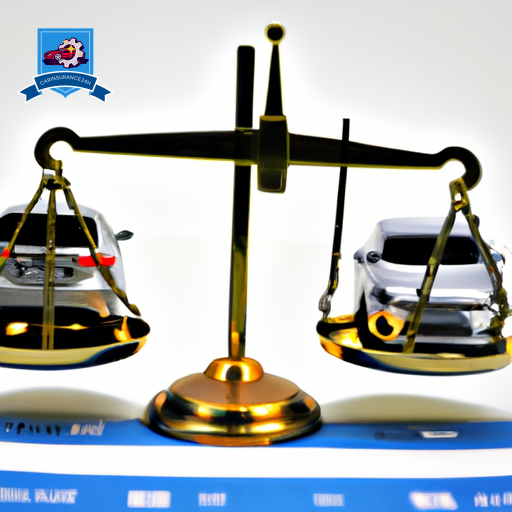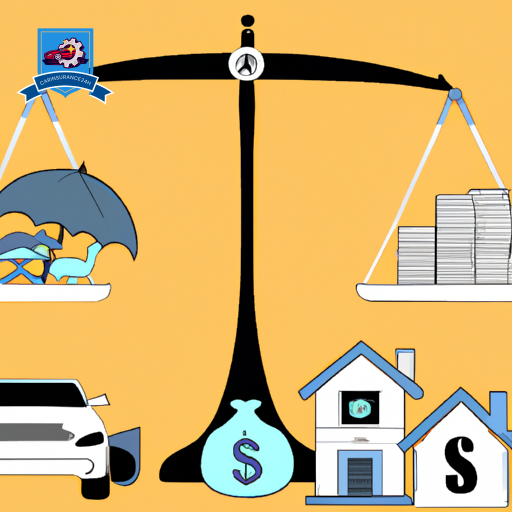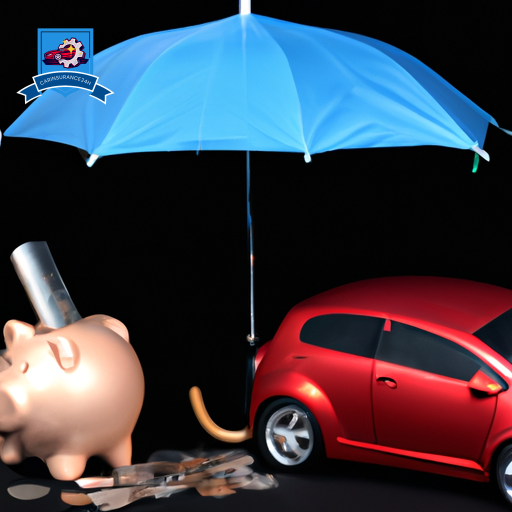In the complex domain of car insurance, adjusting your deductible presents a nuanced strategy for potentially significant savings on premiums. This approach, however, requires a judicious examination of one’s financial standing, a thorough comparison of insurance quotes, and an astute assessment of associated risk factors.
By recalibrating the deductible amount, policyholders may reveal opportunities for reduced expenses, albeit with considerations for their coverage needs and risk tolerance.
As we initiate a detailed exploration of this tactic, it becomes imperative to understand the intricate balance between short-term savings and long-term security, prompting a closer inspection of the underlying principles and potential implications.
Understanding Deductibles

Understanding deductibles is a critical step in managing your car insurance costs effectively. A deductible is a specified amount you agree to pay out-of-pocket before your insurance provider covers the remaining costs of a claim. This fundamental aspect of your policy directly influences your premiums and the overall financial protection offered in the event of an accident or damage to your vehicle.
Deductible basics are essential to grasp for anyone looking to optimize their insurance expenditure. Typically, policies with higher deductibles come with lower monthly premiums, as the policyholder assumes a greater portion of the risk. Conversely, a lower deductible results in higher premiums because the insurer bears a larger share of the risk. Understanding this inverse relationship allows policyholders to make informed decisions tailored to their financial situation and risk tolerance.
The claim process further underscores the importance of comprehending deductibles. In the event of an insurance claim, the deductible amount directly impacts the claim payout. For instance, if the repair costs for a damaged vehicle amount to $3,000 and your deductible is $500, the insurance company would cover $2,500 of the repair costs. It is paramount for policyholders to understand that the deductible is their financial responsibility whenever a claim is filed.
Evaluating Your Financial Situation

Evaluating your financial situation is an essential step in determining the appropriate deductible for your car insurance policy. The decision should not be taken lightly as it can greatly impact your financial stability in the event of an accident. A thorough examination of your financial health can guide you in selecting a deductible amount that aligns with your ability to pay out-of-pocket expenses without jeopardizing your financial security.
-
Examine Your Emergency Fund: An essential part of evaluating your financial situation involves analyzing the size and accessibility of your emergency fund. This fund serves as a financial safety net in unforeseen circumstances, such as needing to pay a car insurance deductible after an accident. Financial advisors often recommend having at least three to six months’ worth of living expenses saved in an easily accessible account. If your emergency fund is robust, you might consider opting for a higher deductible, potentially lowering your premium costs. Conversely, a smaller emergency fund might necessitate a lower deductible to avoid financial strain.
-
Analyze Your Monthly Cash Flow: Understanding your monthly income and expenses can help you determine how much you could comfortably afford to pay as a deductible. If your cash flow allows for setting aside additional savings regularly, you might be more equipped to handle a higher deductible.
-
Consider Your Investment Returns: If you have investments, consider their performance and how accessing these funds, if needed, could influence your overall financial strategy. A solid investment portfolio might provide additional flexibility in selecting a higher deductible, but it’s essential to weigh potential investment returns against the cost savings of a higher deductible.
Selecting the right deductible requires a thoughtful analysis of your financial situation, considering your emergency fund, cash flow, and investment returns to make an informed decision that safeguards your financial well-being.
Comparing Insurance Quotes

Moving from evaluating one’s financial situation, it becomes imperative to start on the process of comparing insurance quotes. This comparison not only sheds light on the variations in quotes offered by different insurers but also underscores the significance of understanding policy coverage differences and the criteria for discount eligibility.
Such an analysis is important in maneuvering the complex landscape of car insurance, aiming to secure the most advantageous deal.
Understanding Quote Variations
Comparing car insurance quotes can reveal important variations in pricing and coverage options, offering valuable insights for cost-effective decision-making. Understanding these differences is pivotal in navigating the complexities of rate comparison and policy terms.
Key factors contributing to quote differences include:
-
Geographical Location: Insurers often adjust rates based on the policyholder’s location, considering factors like traffic density and crime rates.
-
Driving History: An individual’s driving record, including past accidents and violations, has a major impact on premium costs.
-
Vehicle Type: The make, model, and age of the vehicle play an important role in determining insurance rates.
Policy Coverage Differences
When evaluating insurance quotes, a critical aspect to ponder is the variance in policy coverage, which directly impacts both protection and cost. Differences in coverage can influence the claim process, affecting how swiftly and efficiently claims are resolved.
Insurers may have distinct protocols and requirements for filing claims, which can either streamline or complicate the process for policyholders. Coverage exclusions, which delineate what is not covered under the policy, vary between insurers. These exclusions can be pivotal in determining the overall value and effectiveness of the insurance.
Understanding the specifics of what each policy covers and excludes is essential for making an informed decision that aligns with one’s individual needs and risk profile.
Discount Eligibility Criteria
Exploring discount eligibility criteria is a pivotal step in the process of comparing insurance quotes, as it can greatly influence the final cost of the policy. Insurers often provide discounts based on a variety of factors, which, if applicable, can lead to substantial savings. It is pivotal for policyholders to be aware of these potential discounts and evaluate their eligibility.
-
Driving Habits: Insurers may offer discounts for safe driving records or for drivers who have completed defensive driving courses.
-
Vehicle Safety Features: Discounts can be available for vehicles equipped with advanced safety technologies.
-
Payment Methods: Some insurers provide reductions for policyholders who opt for automated payments or pay their premium in full upfront.
Understanding these criteria can help in securing a more affordable car insurance policy while ensuring adequate coverage.
Calculating Premium Savings

Calculating premium savings is a critical step in optimizing car insurance costs. It necessitates a thorough understanding of the premium-deductible balance, as well as the analysis of long-term financial impacts.
Strategies for reducing premiums must be carefully evaluated to guarantee they align with the policyholder’s financial situation and coverage needs. This section will explore methods to achieve cost-effective insurance without compromising on the quality of coverage.
Understanding Premium-Deductible Balance
To effectively reduce car insurance costs, it is essential to comprehend the relationship between premiums and deductibles and how adjusting this balance can lead to significant savings. Understanding this balance involves considering:
-
Risk Tolerance: A higher deductible may lead to lower premiums, but it requires a higher out-of-pocket cost in the event of a claim. Your risk tolerance should guide your deductible choice.
-
Coverage Options: Different coverage levels and types affect premium costs. Adjusting deductibles within these options can optimize savings.
-
Premium Savings Calculation: By analyzing how increasing your deductible affects your premium, you can determine the most cost-effective balance.
Optimizing the premium-deductible balance requires a strategic approach, taking into account personal risk tolerance and the available coverage options to achieve the best financial outcome.
Analyzing Long-Term Impact
After understanding the premium-deductible balance, it becomes imperative to examine the long-term financial effects of these adjustments on premium savings. Driving habits and weather patterns play an essential role in this analysis.
Individuals who drive less or inhabit areas with mild weather may find that a higher deductible, which lowers their premium, results in substantial savings over time. Conversely, those with extensive driving routines or living in regions prone to adverse weather might discover that the potential for frequent claims negates the benefits of a lower premium.
Calculating premium savings, thus, necessitates a nuanced understanding of these factors, enabling policyholders to make informed decisions that align with their specific circumstances and risk tolerance.
Premium Reduction Strategies
Understanding the various strategies for reducing car insurance premiums is essential for policyholders seeking to optimize their financial savings. Calculating premium savings can be approached through meticulous evaluation and adjustment of one’s driving habits and financial standing. Here are three pivotal strategies:
-
Improve Driving Record: Commit to safe driving practices to minimize traffic violations and accidents, greatly lowering risk assessments by insurers.
-
Optimize Credit Score: Enhance your creditworthiness by maintaining a solid credit history, as insurers often correlate higher credit scores with lower risk.
-
Adjust Coverage Levels: Reevaluate your insurance needs periodically, ensuring you’re not over-insured nor underinsured, which can lead to unnecessary expenses.
Assessing Risk Factors

Evaluating the various risk factors associated with insuring a vehicle is a critical step in determining premium costs. Insurers meticulously analyze numerous parameters to calculate risk, thereby influencing the insurance rates offered to consumers. Among these factors, driving habits and the vehicle model stand out for their significant impact on insurance premiums.
| Risk Factor | Description | Potential Impact on Premiums |
|---|---|---|
| Driving Habits | Frequency of use and driving behavior, including speeding or adherence to traffic laws. | High-risk habits lead to higher premiums due to increased accident likelihood. |
| Vehicle Model | Certain models are prone to theft or have higher repair costs. | Luxury or sports cars often incur higher premiums than economy models. |
| Location | Geographic area, considering crime rates and traffic density. | Urban areas with higher crime and traffic congestion tend to have increased premiums. |
Driving habits are a critical consideration for insurers. Frequent driving increases the likelihood of accidents, and behaviors such as speeding or violations of traffic laws signal a higher risk profile. Consequently, individuals with these habits may face elevated premiums.
Similarly, the choice of vehicle model plays a pivotal role. High-end vehicles, including luxury and sports cars, are often associated with higher repair costs and an increased probability of theft. This, in turn, results in steeper insurance rates compared to more economical or safer models.
Understanding these key risk factors enables policyholders to make informed decisions about their vehicle choices and driving behaviors, potentially leading to more favorable insurance costs.
Reviewing Coverage Needs

Having considered the impact of risk factors on premiums, it is equally important to examine personal coverage needs to guarantee adequate protection. This inquiry into one’s coverage necessitates a critical evaluation of several aspects of one’s driving profile and vehicle characteristics to make sure that the insurance policy provides the essential safeguards without imposing unnecessary financial burdens.
-
Assess Driving Habits: The frequency and nature of vehicle use play a vital role in shaping coverage requirements. Individuals who drive extensively or commute long distances may require more complete coverage due to the increased risk of accidents. Conversely, those with minimal driving needs might consider scaling back on certain coverages to reduce premiums. This adjustment ensures that the insurance policy is tailored to the specific risk exposure dictated by one’s driving habits.
-
Evaluate Vehicle Value: The market value of the vehicle plays a pivotal role in determining the appropriate level of insurance coverage. Owners of newer or high-value vehicles might benefit from thorough and collision coverage to protect against potential loss or damage. On the other hand, for older vehicles with diminished value, the cost of such coverage might not be justified, prompting a reassessment of the necessity of full coverage.
-
Consider Liability Needs: Liability coverage is essential for protecting oneself against claims for damages or injuries caused to others. The extent of this coverage should be closely aligned with the individual’s risk profile and financial capability to cover potential liabilities.
Adjusting Deductibles Seasonally

Adjusting deductibles seasonally can offer a strategic approach to managing car insurance costs effectively. By understanding the fluctuation of seasonal risks, policyholders can tailor their deductibles to coincide with periods of increased or decreased risk, thereby optimizing their insurance expenditures. This method requires a nuanced comprehension of how seasonal changes impact the likelihood of filing a claim and the debunking of common deductible myths.
Seasonal risks vary notably throughout the year. For instance, winter months may present a higher risk of accidents due to icy roads, necessitating a lower deductible to mitigate potential out-of-pocket expenses from more frequent claims. Conversely, during summer, when road conditions generally improve, policyholders might opt for a higher deductible, reducing their premium costs without significantly increasing their risk exposure. This dynamic adjustment requires policyholders to assess their driving habits, local climate patterns, and historical claim rates to make informed decisions.
A prevalent deductible myth is that once set, deductibles are fixed for the term of the policy. However, many insurers allow adjustments to deductibles at any time, providing flexibility to respond to seasonal risk variations. Another myth is that a high deductible is always the cost-saving option. While it can lower premiums, it may not be financially prudent if it leads to unmanageable out-of-pocket expenses in the event of a claim.
Leveraging Discounts

Maximizing savings on car insurance often involves actively seeking out and leveraging various discounts offered by insurers. Policyholders can greatly reduce their premiums by understanding and taking advantage of these opportunities. Insurers typically provide discounts based on a range of criteria, including driving habits and payment methods, which can lead to substantial savings over time.
-
Driving Habits: Many insurance companies offer discounts for safe driving records. Drivers who have avoided accidents and traffic violations for a specified period can qualify for lower rates. Additionally, some insurers utilize telematics devices or apps to monitor driving behavior directly, rewarding those who exhibit safe driving habits with discounts. This approach not only encourages safer driving but also allows policyholders to directly influence their insurance costs based on their behavior on the road.
-
Payment Methods: Choosing the right payment method can also lead to discounts. For instance:
- Paying the annual premium in full rather than in monthly installments often attracts a discount, as it reduces administrative costs for the insurer.
- Opting for electronic billing and automatic payments can also lead to reductions in premiums, as these methods streamline the payment process and guarantee timely payment.
- Multiple Policies: Bundling multiple policies with the same insurer, such as auto, home, and life insurance, can lead to significant discounts. Insurers value the business that comes from holding multiple policies and typically offer reduced rates as an incentive.
Regular Policy Review

Regular policy review is an essential strategy for guaranteeing your car insurance coverage aligns with your current needs and may lead to additional savings. This structured approach involves a periodic assessment of your policy’s terms, benefits, and premiums in comparison to your evolving insurance requirements and the broader market offerings. By conducting such reviews, policyholders can identify opportunities for cost reduction, coverage enhancement, or both.
When reviewing your car insurance policy, attention must be paid to the specifics of the policy cancellation terms and the claim process. Understanding the conditions under which a policy can be canceled without incurring penalties is vital. Policyholders should be aware of any time-bound restrictions or fees associated with canceling their current insurance before its expiration. This knowledge empowers consumers to make informed decisions about switching insurers or adjusting coverage levels without facing unexpected financial consequences.
Equally important is a thorough comprehension of the claim process outlined in your policy. Familiarity with the steps required to file a claim, the documentation needed, and the timelines for claim resolution can have a significant impact on your satisfaction with the insurance provider. This aspect of policy review ensures that in the event of an incident, you are well-prepared to navigate the claim process efficiently, thereby reducing stress and potential delays in receiving compensation.
Frequently Asked Questions
How Does a Change in Your Car’s Value Over Time Impact Your Decision on Adjusting Your Deductible?
As a vehicle’s value depreciates over time, adjusting your deductible becomes important for investment protection. Factoring in depreciation guarantees your insurance coverage aligns with the car’s current worth, optimizing your financial responsibility and protection strategy.
Can Filing a Claim for a Minor Accident Significantly Affect Future Premiums, Even if You’ve Adjusted Your Deductible?
Filing a claim for a minor accident can greatly affect future premiums, as it may impact your driving record and perceived risk, potentially leading to adjustments in policy limits and premium calculations by insurers.
How Do State-Specific Insurance Regulations Influence the Strategy of Adjusting Your Deductible to Save on Car Insurance?
State regulations greatly influence deductible limits, shaping the strategy for car insurance savings. These laws vary, directly impacting the feasibility and effectiveness of adjusting deductibles to optimize premium costs within specific regulatory frameworks.
Are There Specific Times During the Ownership of a Vehicle When Adjusting Your Deductible Could Be Less Advantageous?
Adjusting your deductible may be less advantageous during periods of frequent driving or when coverage limits are high. Such times demand scrutiny of one’s driving habits to guarantee insurance cost management and risk mitigation.
How Does Changing Your Deductible Affect Your Eligibility for Certain Insurance Discounts or Loyalty Programs?
Adjusting your insurance deductible can influence your eligibility for discount strategies and loyalty perks. Insurers may offer reduced premiums for higher deductibles or exclusive benefits for consistent policy adherence, impacting overall savings and reward structures.










